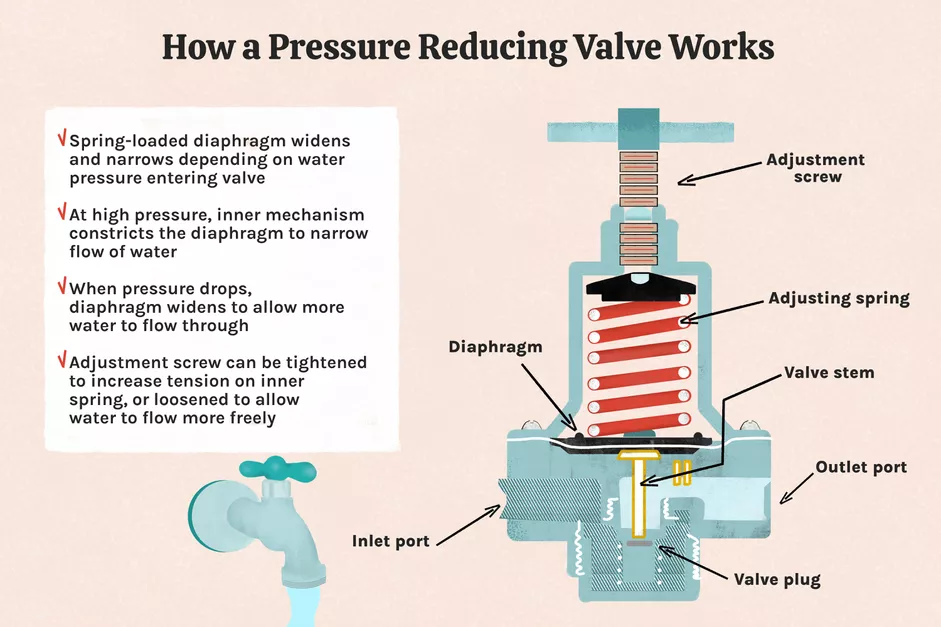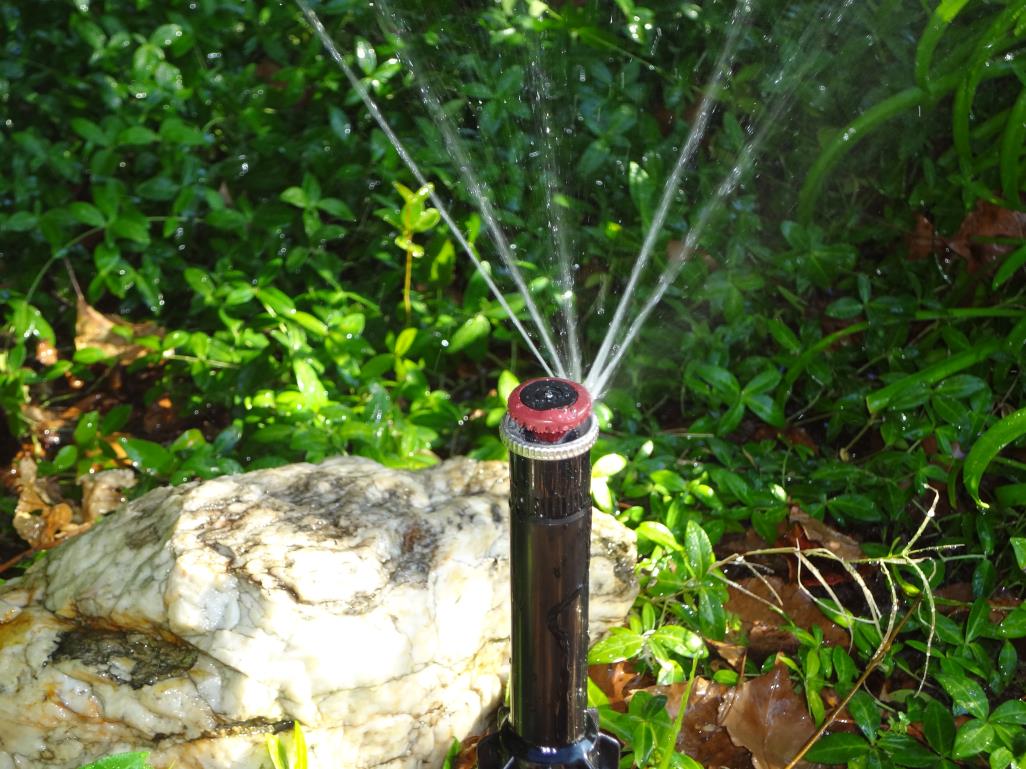Water Pressure Regulators
Water Pressure Regulators

A water pressure regulator (sometimes called a pressure-reducing valve, or PRV) is a specialized plumbing valve that reduces the water pressure coming into the home through the main water line. This valve brings down the pressure to a safe level before the water reaches any plumbing fixtures inside the home. Too much water pressure can cause many plumbing problems, so it is very important to keep the water pressure under control.
| Why do homes have a water pressure regulator? |
| Most home plumbing fixtures are designed to work best at a pressure of about 50 psi (pounds per square inch), but it is not uncommon for municipal water supplies to enter the home with pressures as high as 150 or 200 psi. If such high pressures is present on a regular basis, the strain can eventually cause joints to fail, faucets and other fixtures to leak, and appliances to break down. Clothes washers, dishwashers, and some other household appliances have built-in pressure regulators, but a whole-house water pressure regulator still offers protection to those appliances, and it also serves to protect all the pipes and fixtures throughout the house. |
|
Where is the pressure regulator located? |
|
Pressure regulators may be located near the meter and service line shutoff valve or may be near the household and irrigation shutoff valves. Some older homes do not have pressure regulators. New homes are required to have water pressure regulators. |
| How do I know my regulator is working properly? |
|
A pressure gauge is used to measure the water pressure. Gauges are available at local home improvement stores. |
|
What are symptoms of a malfunctioning pressure regulator? |
|
Symptoms of faulty pressure regulators can vary. You may notice constant high pressure or sustained bursts of unusually high pressure at faucets or shower heads and water being discharged from the relieve valve on your water heater. A hammering noise when turning on water can also indicate high pressure. Sometimes the water pressure drops or is habitually low. In these cases, your irrigation system may dribble when on instead of spraying. Moaning from the pipes can also indicate low pressure. If you suspect problems with your pressure regulator, it is important to have it checked as soon as possible to prevent damage to your plumbing. |
|
What do I do if my pressure regulator is malfunctioning? |
| It is best to call a plumber to repair a malfunctioning regulator. Fixes can range from a simple adjustment or cleaning out a plugged line to rebuilding or replacing the regulator. |
| How can I use a water pressure regulator for water conservation? |
| Higher water pressure causes more water to flow through pipes and fixtures. To provide maximum water savings from your pressure regulator, it may be set to the lowest pressure that adequately supplies your indoor fixtures and your outdoor irrigation system. Check the pressure requirements of your fixtures and irrigation systems prior to adjusting your water pressure. |

| Can I adjust or repair my water pressure regulator myself? |
|
A homeowner or plumber can use manufacturer's instructions for adjustment. Consult a plumber if you are unsure how to adjust, repair, or replace your pressure regulator. If your regulator needs repairs or replacement a permit is required. |
|
Is there a recommended pressure setting? |
|
The City does not specify a recommended pressure setting. Most homeowners set their pressure to approximately 50 psi, but you may prefer something different. Lower settings help to conserve water and prolong plumbing and fitting life. We recommend setting the pressure at the lowest pressure possible, while allowing plumbing fixtures and irrigation systems work properly. |
|
How long does a pressure regulator last? |
| Pressure regulators generally have a useful life of 5 to 10 years. Depending on water conditions, pressure regulators may last only a few years or as long as 40 years. We recommend checking your pressure regulator on a regular basis since they can malfunction without warning and cause damage. The cost to replace a faulty pressure regulator is much less than the cost of fixing damage caused by a failure. |
You can also contact Public Works at publicservices@lincolnca.gov or (916) 434-2450 to request a pressure check if you have any concerns.


